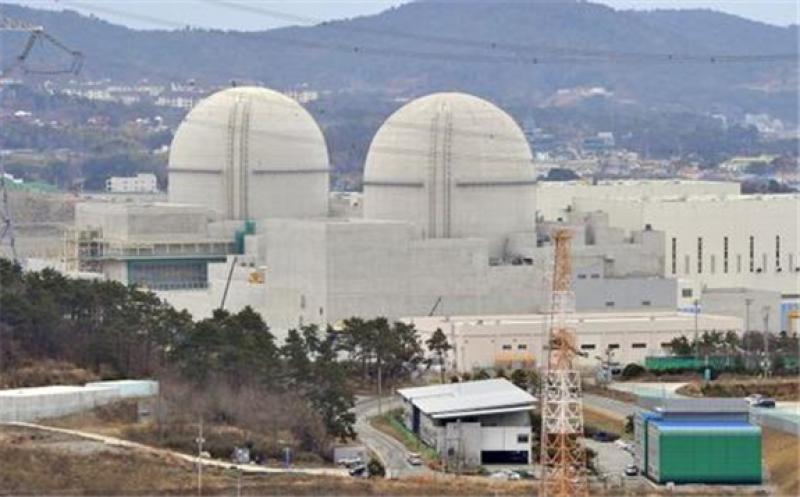South Korea is on track to restart operations at eight nuclear power plants, that were shut for maintenance, and start a newly built plant over the next two months, in a move that will dampen demand for gas-fired power generation and put pressure on LNG imports.

The nuclear restarts come very close to North Asia's procurement period for winter LNG, amid high inventories at South Korea's gas storage facilities, and when LNG demand for power production has suffered from the economic slowdown and the coronavirus pandemic this year.
Some of these nine reactors are restarting from an extended maintenance of two to three years, while others were idled for only a few months. They have a combined capacity of 8,650 MW and account for 37.2% of South Korea's overall combined capacity of 23,250 MW from 24 plants.
Nuclear power accounts for about 30% of South Korea's electricity mix, LNG-fired power plants are responsible for around 25%, and coal-fired power plants satisfy around 40% of demand. The remaining come from sources like renewables and hydro.
"This large increase in generation from nuclear units will lower the need for thermal fuels," Andre Lambine, senior analyst for gas and power at S&P Global Platts Analytics, said. Platts Analytics assumes gas-fired generation will decline, Lambine added, and believes demand for gas in power could average below 60 million cu m/d for Q4, which is a drop from the 74 million cu m/d a year ago.
"As the set of nuclear reactors will be connected to the grid over the next two months, the country's demand for LNG for electricity generation is expected to decline later this year," an official at the Ministry of Trade, Industry and Energy said.
NUCLEAR RESTARTS
A newly constructed reactor -- the Shin Hanul-1 -- one of South Korea's biggest nuclear power plants with a capacity of 1,400 MW, has been under construction since April 2010 and is scheduled to start commercial operations in October, according to state-owned nuclear power operator Korea Hydro & Nuclear Power.
KHNP also plans to restart the 950 MW Hanul-1 and the 1,000 MW Hanul-6, both on the east coast, in October, after a three-month maintenance. It will also restart three reactors at the Hanbit nuclear complex on the west coast -- Hanbit-3, Hanbit-4 and Hanbit–5, each with a 1,000 MW capacity -- by Oct. 17. The 950-MW Hanbit-2 restarted on Aug. 28 having been under maintenance since June 3.
Hanbit-4 has been shut for more than three years since May 2017 due to voids in concrete containment walls and corrosion on containment liner plates. The Hanbit-3 has been shut since May 2018 also due to similar issues.
In addition, the Wolsong-4 reactor with 700 MW capacity on the east coast is scheduled to restart in October after a three-month maintenance. The 650 MW Kori-2 reactor on the southeast coast, which has been shut for maintenance since Feb. 27, will restart on Sept. 3.
However, the impact of these restarts through September and October will be offset by the shutting of three other reactors for maintenance by December.
These include the 1,400 MW Shin Kori-4 that will close for maintenance from Oct. 19 to Jan. 8, 2021, while the 700 MW Wolsong-2 will shut on Sept. 15 for maintenance until Dec. 8. The 950 MW Hanbit-1 will undergo maintenance from Dec. 9 to Feb. 21, 2021, according to KHNP.
Another big reactor -- the Shin Hanul-2 with a capacity of 1,400 MW -- is scheduled to start commercial operation in Aug. 2021, a significant addition to South Korea's nuclear capacity.
Future nuclear capacity additions include the Shin Kori-5 and Shin Kori-6, each with a capacity of 1,400 MW, which have been under construction since June 2016 and expected to start up in March 2023 and June 2024, respectively.
LNG sales by state-owned Korea Gas Corp., which has a monopoly in domestic natural gas sales, fell 9.1% year on year to 17.945 million mt in the first half of this year.
Of the total, LNG sales to power generators dropped 16.5% year on year to 7.267 million mt over January-June, while LNG sales to retail gas companies for households and businesses also fell 3.2% year on year to 10.678 million mt in the first-half.
In 2019, Kogas sold 33.597 million mt, down 7.2% from 36.219 million mt in 2018.